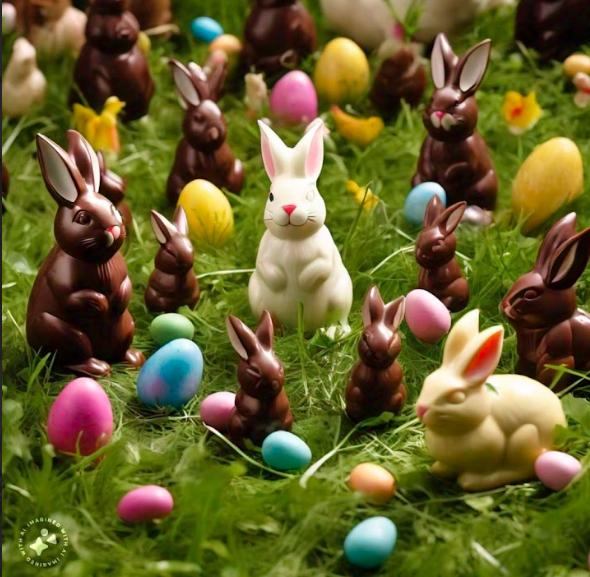
By: Nicky Macaislin
Word on the Street Issue 42, April 2024
. . .
Editor’s Note: Since this edition of Word on the Street will be published after the Easter holiday, we at the newspaper hope you had a lovely, peaceful holiday.
Spring is a time of renewal. One of the most important rituals of renewal is Easter with all its symbolism. Most well-known Easter symbols include colored eggs, chocolate bunnies and lambs, spring chicks, and white lilies. These items are symbolic of the true meaning of Easter. Let’s take a look at some of these symbols:
Lamb – This symbolizes the purity of Jesus Christ, His purity, goodness and sacrifice. Some Christians may eat lamb at Easter dinner to remember Jesus’ sacrifice for humankind.
Rabbits – This animal, perhaps more than any other (except, perhaps, the hare), represents fertility because they produce so many offspring.
White lilies – These beautiful flowers represent the purity of Christ, from the dormant bulbs in the ground to the beautiful blooming flowers.
Perhaps the most recognizable symbol of this important holiday is the Easter egg.
Oval-shaped eggs represent new life, rebirth, and fertility. Eggs also represent the tomb of Christ. Hunting for Easter eggs symbolizes the search for Jesus’ body after His resurrection.
Even the early colors of Easter eggs had important significance, While most early Easter eggs were painted red, some early Christian churches also painted eggs green and yellow. Eggs were painted red to memorialize the blood of Christ that was shed at His crucifixion.
According to many sources, the custom of the Easter egg can be traced to the early Christians of Mesopotamia. From there the practice spread to Siberia and Eastern Europe through the Orthodox churches and then moved into the rest of Europe through the Catholic and Protestant churches. There was also a special blessing said over the eggs: “Lord, let the grace of your blessing come upon these eggs, that they be healthful food for your faithful who eat them in thanksgiving for the resurrection of our Lord Jesus Christ, who lives and reigns with you forever and ever
Two other Easter traditions are the Easter egg hunt and the Easter egg roll. The egg hunt may have begun as a symbol of Mary and the apostles searching for the resurrected Christ. The egg hunt is a game in which decorated eggs are hidden for children to find. The eggs often vary in size, and may be hidden both indoors and outdoors. When the hunt is over, prizes may be given for the largest number of eggs collected, or for the largest or the smallest egg.
Cascarones, a Latin American tradition now shared by many US States with high Hispanic demographics, are emptied and dried chicken eggs stuffed with confetti and sealed with a piece of tissue paper. The eggs are hidden in a similar tradition to the American Easter egg hunt and when found the children (and adults) break them over each other’s heads.
Egg rolling is also a traditional Easter game played with eggs. This tradition was taken to the New World by European settlers and continues to this day each Easter with an Easter egg roll on the White House lawn. Rutherford B. Hayes started the tradition of the Easter Egg Roll at the White House.The Easter Monday Egg Roll was normally held at the United States Capitol; however, by the mid-1870s, Congress passed a law forbidding the Capitol’s grounds to be used for the activity due to the toll it was taking on the grounds. In 1878, Hayes was approached by many young Easter Egg rollers who asked for the event to be held at the White House. He invited any children who wanted to roll eggs to come to the White House in order to do so. The tradition still occurs every year on the South Lawn of the White House.
